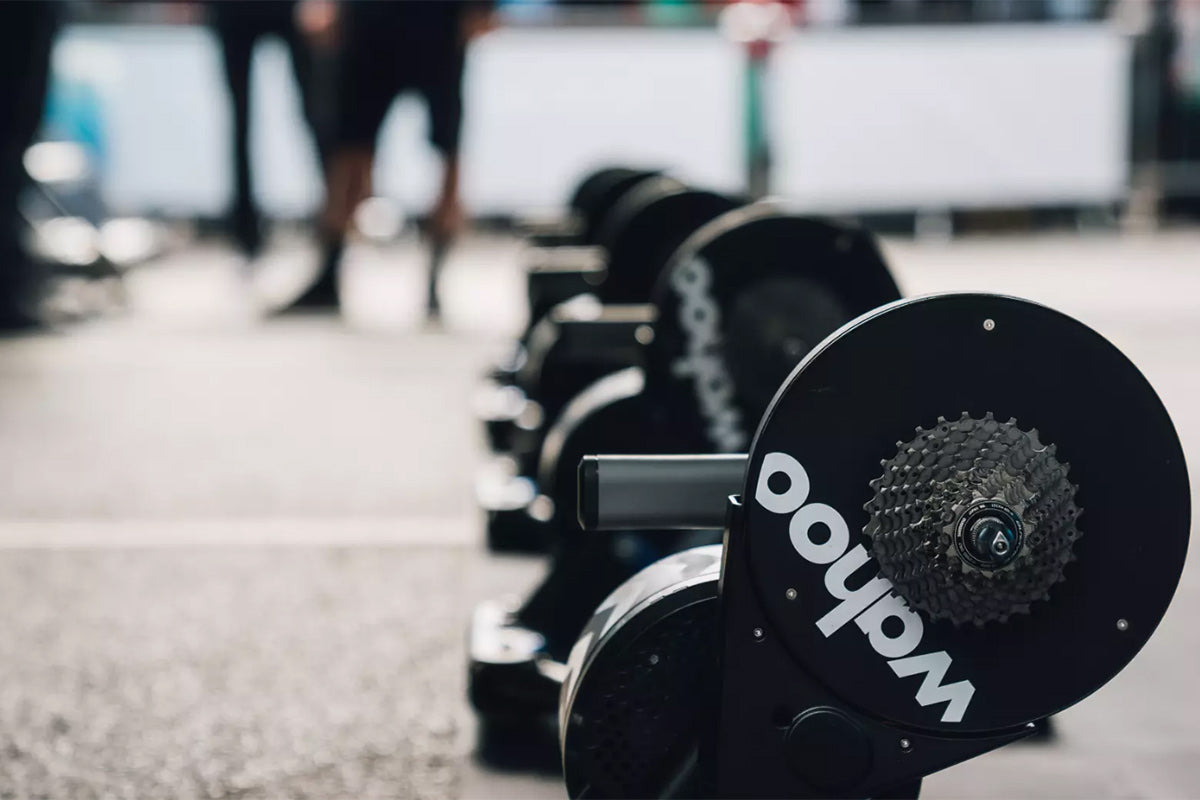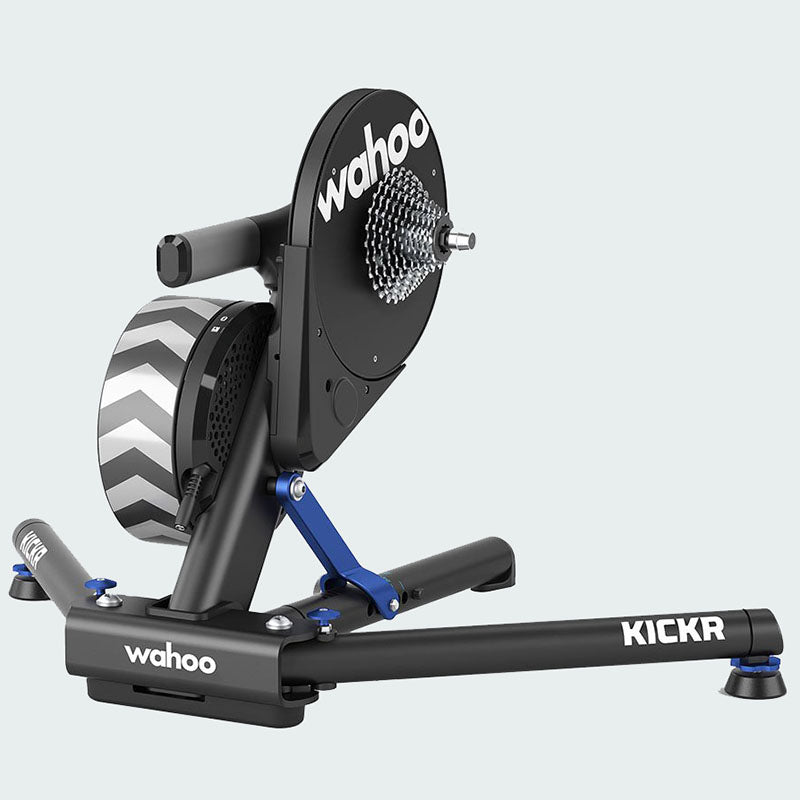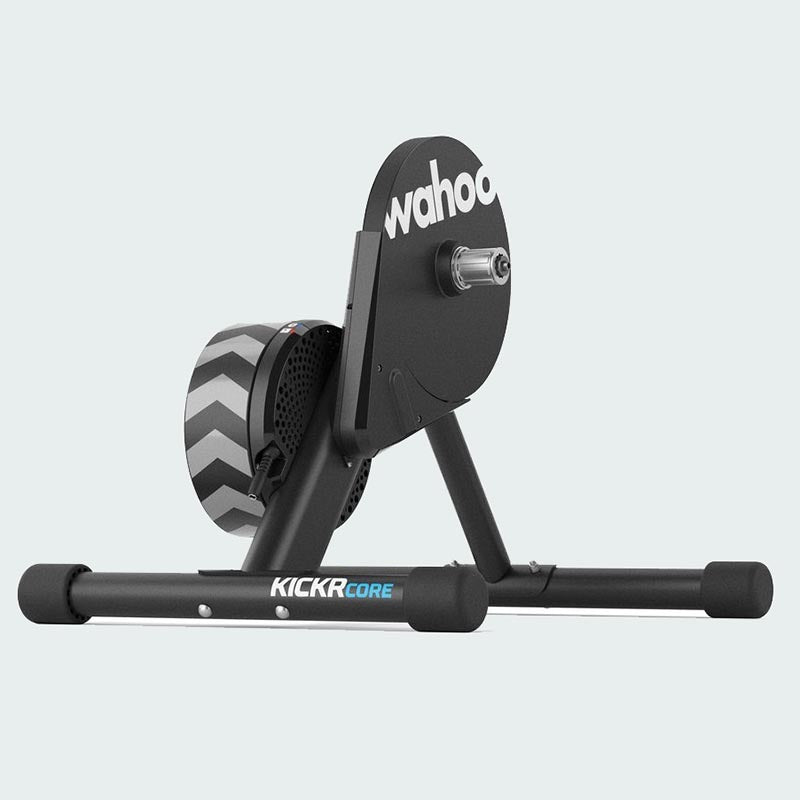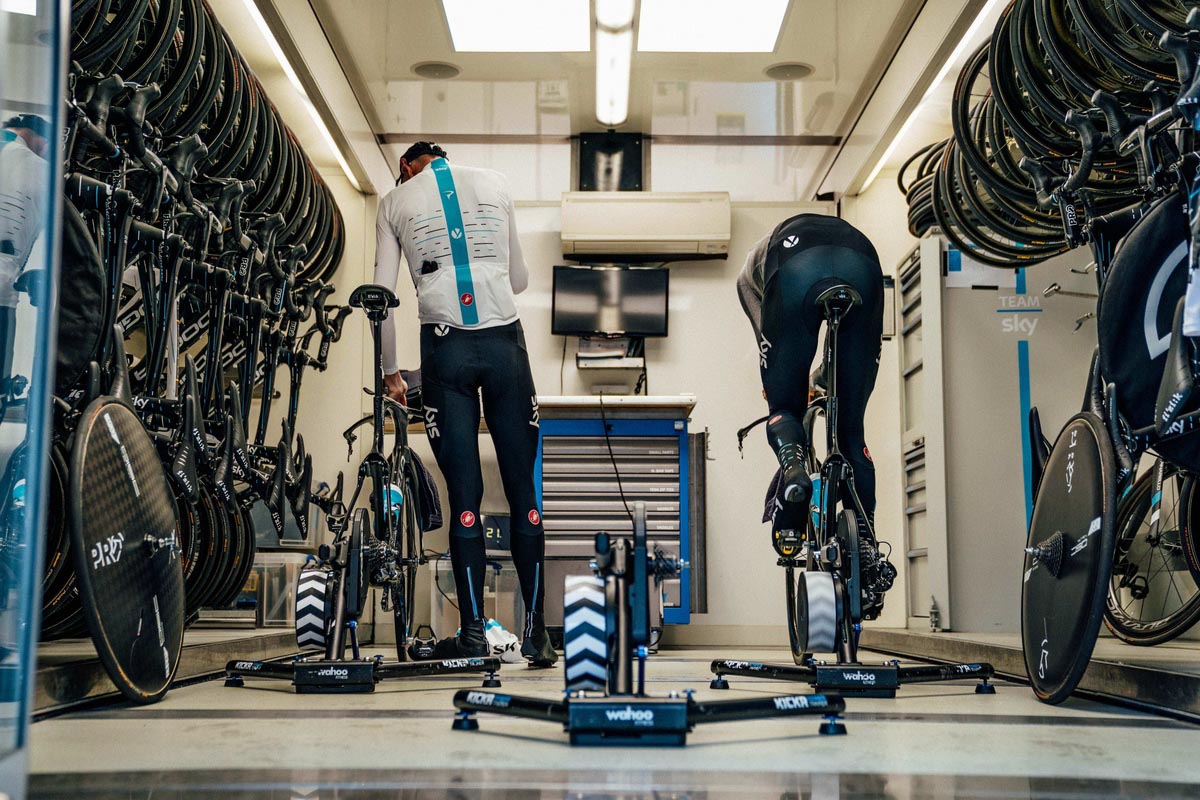One of the brightest new brands to join cycling in recent years, Wahoo have added a new trainer unit to their line up. Here's everything you need to know about Kickr Smart Trainer and Kickr Core.

The Kickr Core builds upon the ever popular Kickr Smart turbo, which also received an update in 2020. Both trainers feature direct drive technology and don't need a training wheel.
The Core may be the mid-range trainer in the Wahoo line-up, but it doesn't skimp on features, making choosing between units all the more tough.
 |
 |
Road Feel
Direct drive trainers provide the greatest real world riding feel. Wahoo have increased the flywheel of the Kickr 18 to 7.25kg. This is important because the bigger the flywheel the more inertia and more realistic the road feel.
The Kickr V5 also comes with AXIS feet (backward compatible with other Kickr models). KICKR AXIS feet enhance the ride feel of the KICKR Smart Trainer by mimicking the side-to-side movement experienced riding outdoors. These feet allow up to 5 degrees of movement and so the KICKR can respond more naturally to the rider tempo and body position changes.
In comparison, the Kickr Core has a flywheel weight of 5.4kg, which is a similar size to 2016 and 2017 Kickr Smart units.

Maximum Resistance
A larger flywheel makes for greater maximum watts. The Kickr V5 can provide 2,200 watts of resistance with 1% accuracy, and is designed to withstand the intense forces dished out by the most powerful cyclists in the world, like pro team partners, Team Sky. That means if you're going for an all out sprint, whether it be on Zwift or TrainerRoad, the unit won't be the limiting factor — it will be your legs!
In comparison, the Kickr Core offers 1,800 watts of resistance with 2% accurancy, which is still higher than its competitors, the Elite Directo (1,400 watts) and Tacx Flux 1 (1,500 watts). Eighteen-hundred watts is plenty for most riders, but it won't suit track sprinters.
Both units are compatible with Wahoo’s own bolt-on hard wear products, like its indoor grade simulator, the Climb, and Wahoo's fan, the Headwind. But Core will only allow the rider to climb up to 16% gradient. The Kickr will get you climbing at 20% gradient. If you felt like replicating an ascent of the Alpe d'Huez, you could do it on either unit, but if Giro d'Italia mountains are more your fare, Monte Zoncolan and Passo di Mortirolo will be for KickrV5 users only.

Functionality
The bigger flywheel, the heavier the unit, and the updated Kickr weighs a hefty 22kg. Thankfully, the design, ergonomics and well positioned weight of the Wahoo Kickr means it remains one of the easiest turbos to move and store. The legs fold flush against the body of the unit. This design also means it doesn't need building when it comes out the box.
Kickr Core is lighter. Out of the box, it requires you to bolt the legs on, but you only need to do it once. Only the front legs fold in slightly to aid storage, but it isn't as compact and, unlike the Kickr, doesn't have a handle for transport.
Before you start riding the Core, you will need to make an additional purchase. The unit doesn't come with a cassette, unlike the Kickr V5, which is supplied with a Shimano 105 cluster. You do get cadence built in, and if you purchased a Core that is older than 12 months Wahoo released a firmware update enabling all Core riders to measure their cadence.

What is the same?
The biggest selling point of the Wahoo update range is the new drive belt, which is pretty much silent, thanks to a new ribbed belt design.
Both units are optimised to work with the Wahoo Headwind and Wahoo Climb. Connection via Bluetooth or ANT+ is easy, and the units allow you to do both at the same time. External apps like Zwift and TrainerRoad work seamlessly, and while we're yet to explore others, being open source means the units should be able to connect to pretty much anything.
The Wahoo Kickr Smart Turbo remains one of the best trainers on the market, thanks to the sharpened up feel from the new belt and large flywheel. The Kickr Core represents great value, with a decent flywheel but without the practical extras of its big brother, the Kickr.